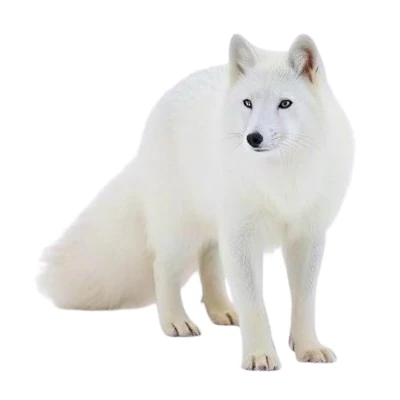
The Insular Arctic Fox (Vulpes lagopus) is a remarkable subspecies of the Arctic fox, adapted to the extreme conditions of isolated Arctic islands. With its thick white fur and unique survival strategies, it embodies resilience in the face of the harshest environments.
The Insular Arctic Fox is smaller than its continental cousins, generally weighing between 2.5 and 4 kg. Its dense white fur in winter (sometimes blue-gray) turns brown-gray in summer, providing perfect camouflage. Its short ears and reduced muzzle limit heat loss, while its feet are covered in fur to withstand the cold.
The Insular Arctic Fox (Vulpes lagopus) belongs to the Canidae family. Here is its scientific classification:
This insular subspecies has unique adaptations compared to continental Arctic foxes.
The Insular Arctic Fox lives exclusively on certain Arctic islands such as those of Svalbard, the Canadian archipelago, and Greenland. These isolated territories offer few resources but a relative absence of predators. Its habitat consists of coastal tundra, rocky areas, and marginal glaciers where it finds shelter and food.
Unlike continental Arctic foxes, the insular version shows greater tolerance for proximity to its peers. It sometimes forms small family groups to hunt and raise young. Its territory is generally more restricted than that of continental populations, due to island limitations.
Its diet mainly consists of seabirds (and their eggs), lemmings (when available), and carcasses of seals or beached whales. In summer, it also consumes berries and algae. The Insular Arctic Fox is known to store food in caches to survive the winter.
Listed as a species of least concern by the IUCN, the Insular Arctic Fox faces specific threats: reduction of sea ice limiting its movements, competition with the red fox which is expanding its territory northward, and increased human disturbances in the Arctic.
The Insular Arctic Fox (Vulpes lagopus) shares its ancestry with:
Observing this ghost of the ice requires patience and respect: